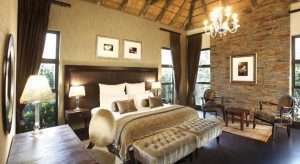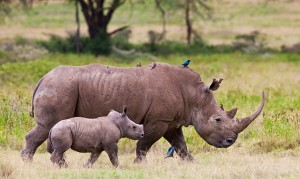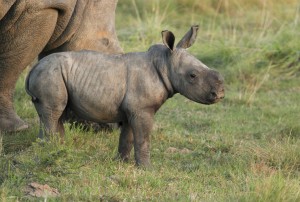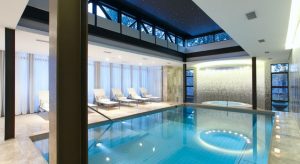What < could a Trump presidency mean for the world? Well like many other people in the Southern Hemisphere I got up very early this morning to find out whether Clinton, as expected, had bested Trump in the US elections, only to find that the unthinkable had happened. To learn that the most powerful nation on Earth had chosen a man considered by almost half its population to be unqualified and temperamentally unfit to hold its highest office was a huge shock. I must also admit to feeling enormous dismay that a man who has no understanding of nuclear power now holds the nuclear codes; and a man who believes that climate change is a hoax is now in a position to tear up the Paris Agreement. In little more than a day the global rulebook has changed - actually the rulebook has been torn up and thrown away. Volatile waves of change are therefore likely to intensify, dramatically reshaping the world as we know it especially in the geopolitical and macroeconomic landscapes. But on closer reflection, is this necessarily such a bad thing? The Asian Development Bank believes Asia’s GDP will increase nine-fold from $16 trillion in 2010 to $148 trillion in 2050. This is expected to account for half the global GDP by mid-century, resulting in a rebalancing of global economic power which would see China and India overtake the United States to become the world’s largest and second largest economies respectively in terms of GDP by 2050. This development would result in an emerging shift in power from the West to the East, and with Asia’s potentially historic rise among the global community of nations, the 21st century would become an Asian Century dominated by Asian superpowers and Asian economic, political, governance and cultural institutions. In light of the result of the 2016 US election, however, this could change. If Trump's promise of a resurgence in the fortunes of the US economy materializes, a revitalized US economy could mean the US retaining its geoeconomic position in decades to come. Although this would maintain the current status quo, it would also mix things up, and in another scenario, a Global Century could emerge: one in which no one country or continent has a prevailing concentration of influence. This Global Century would ideally be characterized by interdependence rather than insularity; with new thinking, collaborative effort and coalitions of interest to address rising challenges. Is this too much to hope for? I really, really hope not!
Monthly Archives: November 2016
How going green can offer massive cost savings
 As < the world continues to debate whether or not climate change is a reality, businesses throughout South Africa are weighing up the pros and cons of “going green”. While some use eco status as a badge to promote a good image, others are intent on actually making a difference in the way they impact the environment.
In the construction industry, for example, many companies are focussing on green building, ensuring that materials used are environmentally friendly and that the buildings are designed to promote natural airflow, less electricity usage and increased incorporation of greenery. The question is, what happens after these buildings are occupied? Are green principles maintained by those that use the space? Are green cleaning methods used, is printing limited, is pollution thwarted? If not – can the building still be called green?
The key to achieving “going green” is training (educating people how to be more green) and viability (is it affordable for companies to choose a less harmful path?). According to Shawn Andrews, Managing Director of BanoBrite, companies are still skeptical about the green movement. “We developed a ‘green challenge’ and approached a number of lodges and hotels, challenging them to change their cleaning footprint to a completely green solution,” confirms Andrews. “We were met with much skepticism. This ranged from price concerns to indifferent attitudes.”
[caption id="attachment_4648" align="alignleft" width="300"]
As < the world continues to debate whether or not climate change is a reality, businesses throughout South Africa are weighing up the pros and cons of “going green”. While some use eco status as a badge to promote a good image, others are intent on actually making a difference in the way they impact the environment.
In the construction industry, for example, many companies are focussing on green building, ensuring that materials used are environmentally friendly and that the buildings are designed to promote natural airflow, less electricity usage and increased incorporation of greenery. The question is, what happens after these buildings are occupied? Are green principles maintained by those that use the space? Are green cleaning methods used, is printing limited, is pollution thwarted? If not – can the building still be called green?
The key to achieving “going green” is training (educating people how to be more green) and viability (is it affordable for companies to choose a less harmful path?). According to Shawn Andrews, Managing Director of BanoBrite, companies are still skeptical about the green movement. “We developed a ‘green challenge’ and approached a number of lodges and hotels, challenging them to change their cleaning footprint to a completely green solution,” confirms Andrews. “We were met with much skepticism. This ranged from price concerns to indifferent attitudes.”
[caption id="attachment_4648" align="alignleft" width="300"] Room at Valley Lodge[/caption]With a little persistence, however, Andrews found a business that was ready to take up the challenge – Valley Lodge and Spa in Magaliesburg. Valley Lodge took up the task of greening the business, beginning with the process of converting the entire establishment from chemicals to green cleaning, thus making it the first lodge in South Africa to adopt a 100% green cleaning policy.
Room at Valley Lodge[/caption]With a little persistence, however, Andrews found a business that was ready to take up the challenge – Valley Lodge and Spa in Magaliesburg. Valley Lodge took up the task of greening the business, beginning with the process of converting the entire establishment from chemicals to green cleaning, thus making it the first lodge in South Africa to adopt a 100% green cleaning policy.
The first step in revolutionising the cleaning process was to determine the number of products used in each department (laundry, kitchen and housekeeping) and the areas where they could be replaced with the BanoBrite/Green Worx range of products. “To ensure a smooth change-over in each department, it was decided to convert each department individually. This meant that with adequate training, the integrity of the green methodologies was maintained,” confirms Andrews.
In response to cost concerns, Andrews confirms that product usage was reduced by 30% in the first two weeks of the change. In addition, one all-purpose cleaner replaced up to four chemical cleaning products, making it even more cost effective. The kitchen is now more sanitary, with the use of non-toxic cleaning products, and the sewage plant was treated with a sewage activator, which eliminated the waste and chemical build up that had been exacerbated over time.“Valley lodge is now 100% green; no chemicals are being used on the property, their costs have decreased by 40% and continue to drop,” concludes Andrews. “This is an example that all businesses aspiring to go green should follow – start where you can and then go all out!”
How a nine year old scooped a major conservation award
Hunter Mitchell, Aquila Animal and Rescue Centre’s (ARC) Ambassador, has scooped the “Visionary Wildlife Warrior for 2016” award of the Steve Irwin Wildlife Warrior Foundation in Australia.
 Nine < year old Hunter Mitchell was so inspired by the drama that played out at the Aquila Private Game Reserve in the Western Cape South Africa in the early hours of 31 December 2015, when a rhino calf was born, abandoned by its mother, and subsequently rescued by animal welfare staff at the reserve, that he set about single-handedly raising R75 000 to assist in hand-rearing the calf.
The calf, which has been named “Osita” which means “from today onwards it will be better”, is now a strapping youngster weighing in at 600 kilograms and standing 1.4 meters tall. Osita has adapted well to its surroundings with the help of a goat animal companion called “Bokkie”, which was introduced to teach the rhino calf how to graze. Bokkie has also helped to reduce human interaction so that Osita can eventually be released back into the wild. Osita, Bokkie and a human carer spend every hour of the day together, and are often seen on their twice-daily walks through the reserve.
Nine < year old Hunter Mitchell was so inspired by the drama that played out at the Aquila Private Game Reserve in the Western Cape South Africa in the early hours of 31 December 2015, when a rhino calf was born, abandoned by its mother, and subsequently rescued by animal welfare staff at the reserve, that he set about single-handedly raising R75 000 to assist in hand-rearing the calf.
The calf, which has been named “Osita” which means “from today onwards it will be better”, is now a strapping youngster weighing in at 600 kilograms and standing 1.4 meters tall. Osita has adapted well to its surroundings with the help of a goat animal companion called “Bokkie”, which was introduced to teach the rhino calf how to graze. Bokkie has also helped to reduce human interaction so that Osita can eventually be released back into the wild. Osita, Bokkie and a human carer spend every hour of the day together, and are often seen on their twice-daily walks through the reserve.
 Hunter frequently visits Osita and lends a hand with mud baths, feeding and mucking out of the boma, the protected area where Osita currently lives.
Hunter frequently visits Osita and lends a hand with mud baths, feeding and mucking out of the boma, the protected area where Osita currently lives.
Together with rhino carer, Divan Grobler, and with the blessing of A.R.C and Rhino Art (an NGO focussed on the international education of children), Hunter has visited many schools in the Western Cape area, raising awareness about rhino conservation. And with its positive outcome, Osita’s story has become a symbol of hope for the conservation of rhinos in Africa.
Hunter and his parents have been invited to attend the “Visionary Wildlife Warrior for 2016” Gala Event in Brisbane to receive his award at the end of the month. Unfortunately funds are an issue and A.R.C. together with Rhino Art are appealing to the public to assist in getting this little wildlife warrior across the ocean to collect his award. They are looking to raise around R80 000 to send Hunter, his mom and Grobler across to Australia, with the view of Hunter and Grobler conducting talks about rhino conservation at various schools in the Australian city and surrounds.
